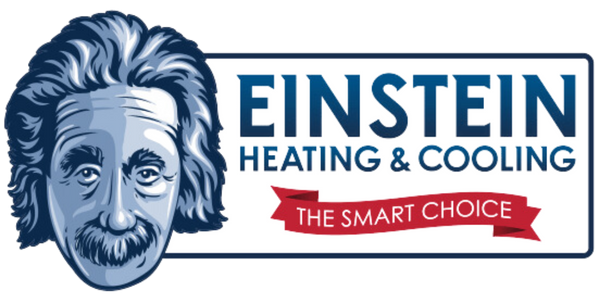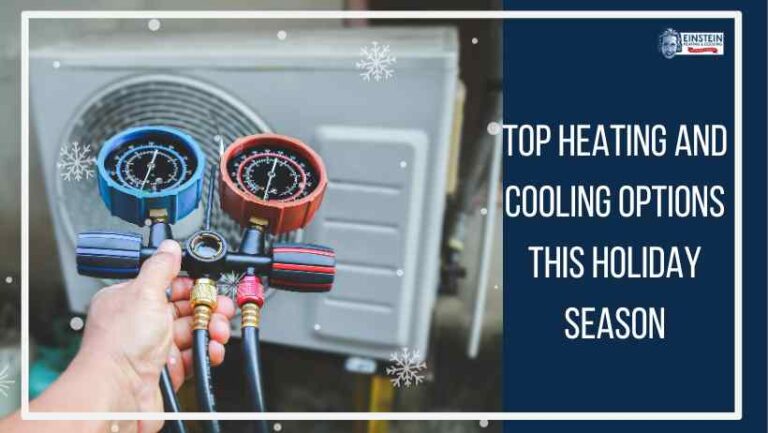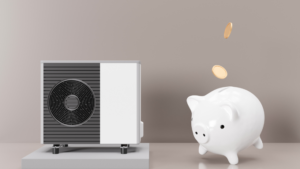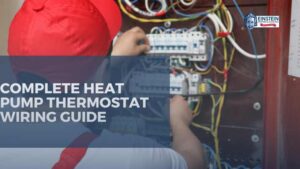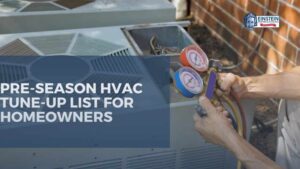The holiday season brings joy and warmth, but as the temperatures drop, it’s essential to ensure your home remains a comfortable haven for festive celebrations. Whether you’re hosting a gathering or enjoying quiet moments with loved ones, having the right heating and cooling options in place is crucial. In this comprehensive guide, we’ll delve into various factors to consider when choosing heating and cooling options to make your holiday season truly cozy.
Factors to Consider for Heating and Cooling Options
1. Climate Considerations
Understanding your local climate is the first step in selecting heating and cooling options that meet your home’s specific needs. Different regions experience varying temperature ranges and weather conditions. Assess the average winter and summer temperatures, as well as any unique climate factors in your area, to determine the most effective and efficient solutions.
Bend experiences a semi-arid climate characterized by cold winters and warm summers. Winters in Bend can be harsh, with temperatures often dropping below freezing, and occasional snowfall is not uncommon. On the flip side, summers can be warm, with daytime temperatures reaching the mid-80s to 90s Fahrenheit. The significant temperature variations throughout the year make Bend’s climate distinctive and require a versatile heating and cooling strategy.
Winters in Bend, Oregon
The need for an effective heating system during the winter months in Bend becomes paramount. Cold temperatures, sometimes dipping into the teens or even single digits, necessitate a reliable heating solution to keep homes warm and comfortable. Systems such as gas furnaces, electric furnaces, or radiant heating may be particularly suitable for combating the chilly winters in Bend.
Snowfall is not uncommon in Bend, adding a layer of consideration for homeowners. While a robust heating system is essential, it’s equally important to choose a system that can efficiently maintain warmth, even in the presence of snow and freezing temperatures.
Summers in Bend, Oregon
Summers in Bend bring a different set of challenges, with warm temperatures requiring effective cooling solutions. Air conditioning units, especially those equipped to handle the specific climate conditions of Bend, become valuable assets. It’s crucial to consider the size and layout of your living space to determine the most appropriate type of air conditioning unit, whether it be a central air system, split system, or window unit.
Bend’s high desert climate also means that while daytime temperatures can be warm, nights can be considerably cooler. This temperature fluctuation underscores the importance of having a versatile HVAC system that can effectively address both daytime cooling needs and nighttime comfort.
Year-Round Adaptability
Considering Bend’s climate, a holistic approach to year-round adaptability is essential. Opting for a dual-purpose system, such as a heat pump, which provides both heating and cooling functions, could be a strategic choice. Heat pumps are known for their efficiency in moderate climates, making them suitable for the temperature fluctuations experienced in Bend throughout the year.
2. Energy Efficiency
The push for energy efficiency is not only an environmental concern but also a practical consideration for your budget. Opting for heating and cooling systems with high energy efficiency ratings can significantly reduce your utility bills. Look for devices endorsed with Energy Star certification or other relevant standards to ensure both eco-friendly and cost-conscious choices.
These systems leverage advanced technologies and design principles to reduce environmental impact and lower utility costs for homeowners. Here are some examples of energy-efficient HVAC systems:
Geothermal Heat Pumps:
- Geothermal heat pumps are highly efficient systems that tap into the Earth’s constant ground temperature to provide heating, cooling, and hot water. By exchanging heat with the ground, they can achieve remarkable energy efficiency, making them a sustainable choice for environmentally conscious homeowners.
Variable Refrigerant Flow (VRF) Systems:
- VRF systems, also known as ductless or mini-split systems, use variable-speed compressors to adjust the refrigerant flow based on the heating or cooling requirements of different zones in a building. This precise control enhances energy efficiency by avoiding unnecessary energy consumption in spaces that are already at the desired temperature.
High-Efficiency Furnaces:
- Modern high-efficiency furnaces utilize advanced combustion and heat exchanger technologies to extract more heat from the fuel they burn. They often have AFUE (Annual Fuel Utilization Efficiency) ratings of 90% or higher, ensuring that a significant portion of the energy is converted into useful heat for the home.
Air-Source Heat Pumps:
- Air-source heat pumps are versatile systems that can provide both heating and cooling. These systems extract heat from the outdoor air to warm the interior during winter and reverse the process to cool it in summer. Energy-efficient models are designed to operate efficiently even in extreme temperatures.
Smart Thermostats:
- While not an HVAC system in itself, a smart thermostat can significantly enhance the energy efficiency of your existing heating and cooling systems. These devices learn your preferences, adapt to your schedule, and can be controlled remotely through mobile apps, helping to optimize energy use and reduce wastage.
High SEER Air Conditioners:
- Seasonal Energy Efficiency Ratio (SEER) is a measure of the efficiency of air conditioners. High SEER air conditioners are designed to provide effective cooling with minimal energy consumption. Investing in a system with a higher SEER rating can result in substantial energy savings over the lifespan of the unit.
Solar HVAC Systems:
- Integrating solar panels with HVAC systems allows for the generation of electricity to power the heating and cooling components. This approach reduces reliance on the grid and harnesses renewable energy, making it an environmentally friendly and cost-effective solution in the long run.
Energy Recovery Ventilators (ERVs):
- ERVs enhance indoor air quality while minimizing energy loss. These systems exchange stale indoor air with fresh outdoor air, recovering heat or coolness in the process. By transferring energy between the incoming and outgoing air streams, ERVs contribute to energy efficiency and reduce the workload on heating and cooling systems.
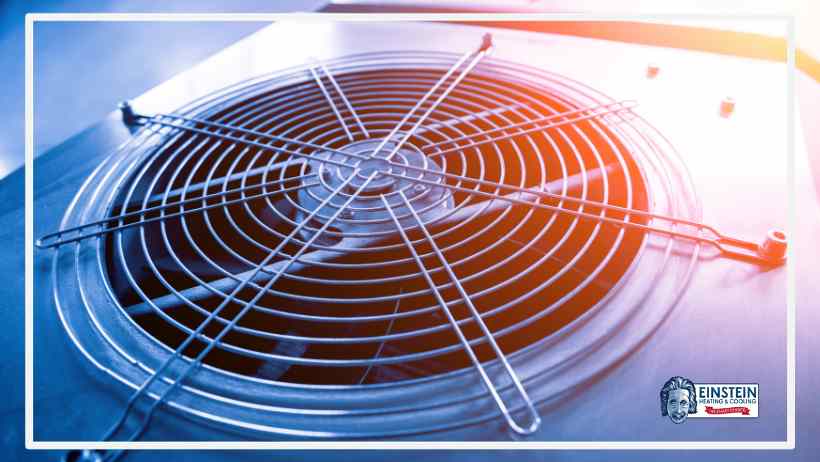
3. Type of Heating Systems
Furnaces
- Furnaces are one of the best heating options that come in both gas and electric variants. Furnace installation can be costly but they are extremely efficient. Gas furnaces are celebrated for their efficiency, leveraging natural gas to generate heat. On the other hand, electric furnaces are known for their ease of installation and maintenance. Consider the availability of gas in your area and your budget when choosing between gas and electric furnaces.
Heat Pumps
- For versatility, heat pumps offer both heating and cooling functions. These systems extract heat from the air or ground to warm your home in winter and reverse the process to cool it in summer. While heat pumps are energy-efficient, they may be less effective in extremely cold climates.
Radiant Heating
- Radiant heating provides a different approach by warming surfaces directly, such as floors, walls, or ceilings. This method is valued for its comfort and efficiency, although installation costs may be higher than traditional heating systems. It’s an option to consider for those seeking a luxurious and consistent heat distribution throughout their homes.
4. Cooling Options
Air Conditioning Units
- Air conditioning units are a classic choice for cooling homes during warmer months. These come in various types, including window units, split systems, and central air conditioning. The selection depends on factors such as the size of your living space and your specific cooling needs.
Evaporative Coolers
- Known as swamp coolers, evaporative coolers provide an eco-friendly alternative to traditional air conditioners. Operating by using water to cool the air, they excel in dry climates. However, their effectiveness may be diminished in humid conditions, making them a regional consideration.
Ceiling Fans
- Complementing your cooling system, ceiling fans improve air circulation and are energy-efficient. They aid in distributing both warm and cool air throughout a room, making them an excellent addition to any home. Consider strategically placing ceiling fans in key areas to enhance the overall effectiveness of your heating and cooling options.
5. Zoning Systems
Zoning systems provide the ability to control the temperature in different areas of your home independently. This is especially useful if you have rooms that are used less frequently or have varying temperature preferences. Zoning systems can be integrated into existing HVAC systems or added to new installations, providing a tailored approach to heating and cooling. The way they work is explained below:
Zone Dampers:
- Zoning systems typically incorporate motorized dampers installed within the ductwork. These dampers can open or close to control the airflow to specific zones. Each zone has its own damper, allowing for individualized temperature regulation.
Thermostats for Each Zone:
- A key component of zoning systems is the installation of a thermostat for each zone. These thermostats serve as control points for regulating the temperature within their designated areas. Homeowners can set different temperature preferences for each zone based on the unique requirements of those spaces.
Control Panel or Smart Controller:
- Zoning systems are centrally managed through a control panel or a smart controller. This central hub orchestrates the communication between thermostats, dampers, and the HVAC system. In advanced systems, smart controllers may allow users to program schedules, monitor energy consumption, and make real-time adjustments remotely through mobile apps.
Zone Sensors:
- To enhance precision, some zoning systems incorporate zone sensors that monitor temperature variations within specific areas. These sensors provide valuable data to the control panel, enabling the system to make real-time adjustments based on the actual conditions in each zone.
Communication Protocol:
- Zoning systems utilize a communication protocol to facilitate the exchange of information between components. This can range from traditional wired systems to wireless technologies. The choice of communication protocol often depends on the specific requirements of the building and the desired level of automation.
6. Smart Thermostats
The advent of smart technology brings advanced features to thermostats. Smart thermostats offer programmable schedules, remote access through mobile apps, and the ability to learn your heating and cooling preferences over time. Investing in a smart thermostat not only enhances energy efficiency but also provides convenient control over your home’s climate, ensuring optimal comfort.
7. Maintenance Requirements
Maintaining your heating and cooling systems is crucial for their optimal performance and longevity. Consider the maintenance requirements of the options you’re contemplating. Some systems may require servicing from professional technicians, while others can be easily maintained through simple do-it-yourself tasks. Regular maintenance not only preserves efficiency but also prevents costly repairs down the road. Some common maintenance checks include the following:
Regular Filter Replacement:
- One of the simplest yet most critical maintenance tasks is regularly replacing air filters. These filters play a pivotal role in trapping dust, allergens, and debris, preventing them from circulating through the system. Over time, filters can become clogged, impeding airflow and forcing the HVAC system to work harder. Regular replacement, typically every 1-3 months, depending on the filter type, ensures efficient operation and maintenance of indoor air quality.
Cleaning Components:
- Dirt and debris can accumulate on various components of the HVAC system, affecting its performance. Cleaning the evaporator and condenser coils, as well as the blower components, is essential to maintain optimal heat exchange and airflow. Additionally, keeping the area around outdoor units clear of vegetation and debris helps ensure proper ventilation and cooling efficiency.
Lubricating Moving Parts:
- HVAC systems consist of numerous moving parts that require proper lubrication to reduce friction and wear. Regularly lubricating motors, bearings, and other moving components can prevent premature wear and tear, ultimately extending the lifespan of the system. Consult the manufacturer’s guidelines or seek professional advice on the appropriate lubricants and lubrication intervals.
Checking Refrigerant Levels:
- Optimal refrigerant levels are crucial for the efficient operation of air conditioning systems. Low refrigerant levels can lead to decreased cooling performance and potential damage to the compressor. Periodically checking and, if necessary, replenishing refrigerant levels is a task best left to trained professionals, ensuring accurate measurement and compliance with environmental regulations.
Inspecting Ductwork:
- Leaky or uninsulated ductwork can result in significant energy losses and reduced system efficiency. Periodic inspections should include checking for leaks, loose connections, and proper insulation. Sealing any leaks and ensuring adequate insulation helps maintain the efficiency of both heating and cooling systems.
8. Installation Costs
When planning for heating and cooling upgrades, it’s essential to factor in installation costs. These costs can vary significantly depending on the type of system you choose. While some systems may have higher upfront costs, they could result in long-term savings on energy bills. Understanding the full scope of installation expenses ensures that your budget aligns with your home comfort goals.
9. Long-Term Durability
Investing in durable heating and cooling options is a wise decision for long-term comfort. Consider the lifespan of the systems you’re evaluating and choose reputable brands with a track record of reliability. A durable system not only ensures uninterrupted comfort during the holiday season but also provides peace of mind throughout the year.
10. Environmental Impact
With environmental consciousness on the rise, many homeowners are seeking eco-friendly heating and cooling options. Evaluate the environmental impact of the systems you’re considering, including their energy consumption, refrigerants used, and overall sustainability. Choosing environmentally friendly options aligns with the spirit of a green holiday season, contributing to a healthier planet for future generations.
Why Choose Einstein Heating and Cooling For Your HVAC Needs
When it comes to heating and cooling solutions in Bend, Oregon, Einstein Heating and Cooling stands out as a trusted and reliable choice. With a commitment to excellence and customer satisfaction, Einstein Heating and Cooling brings a wealth of experience to the table. Their team of skilled HVAC technicians is well-versed in the unique climate considerations of Bend, ensuring that every installation is tailored to the specific needs of the local environment.
Einstein Heating and Cooling takes pride in its comprehensive services, offering not only top-notch system installations but also prompt and efficient repair and maintenance solutions. Whether you’re looking to upgrade to an energy-efficient HVAC system, require a quick and effective repair, or seek a proactive maintenance plan to keep your system in peak condition, Einstein Heating and Cooling delivers with precision and expertise.
Conclusion
Selecting the right heating and cooling options for your home is a thoughtful process that involves considering various factors. Whether you opt for a traditional furnace, a modern heat pump, or a combination of heating and cooling solutions, embracing comfort this holiday season is within reach with the right choices, especially with choosing a reliable and efficient HVAC company, like Einstein Heating and Cooling. Remember, it’s not just about warmth; it’s about creating an environment where cherished holiday memories can unfold.
